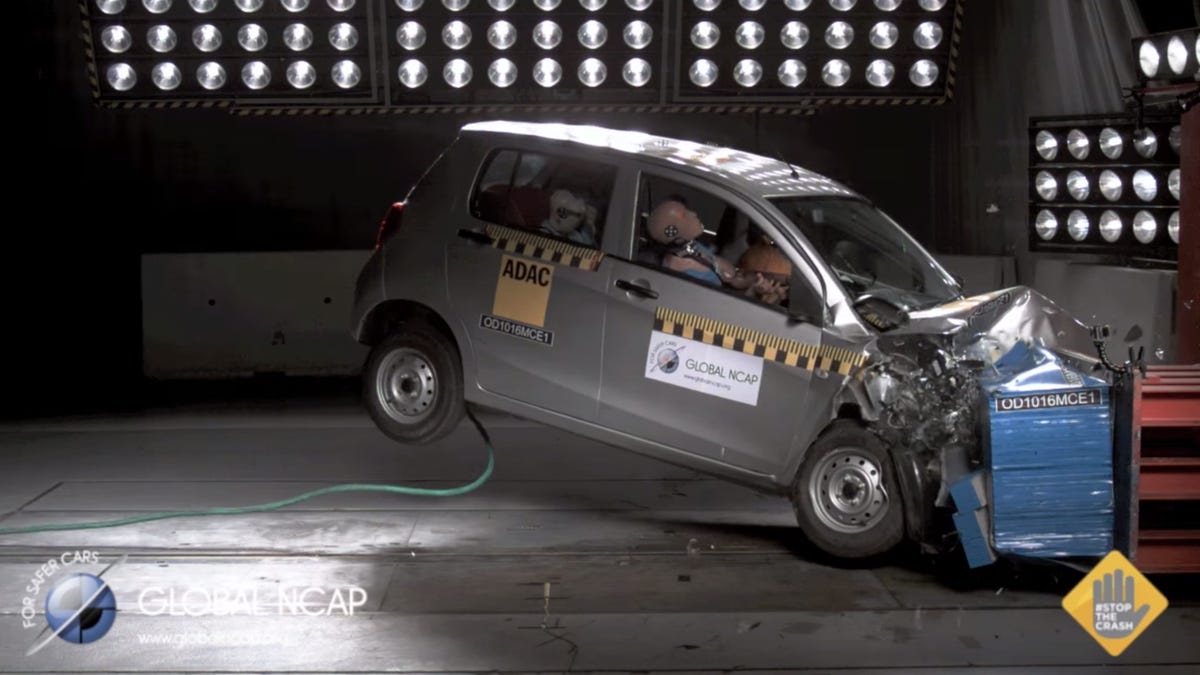These zero-star crash test videos show why regulations can be a good thing
It's not all about keeping the little man down. Sometimes, it's about keeping the little man down in his car seat when he ends up in a barrier at speed.

Here in the US, it seems like nearly every car on the road is at or near that all-important five-star crash rating. But we're a lucky bunch. Other countries with less money to spend per person still need wheels, and automakers are willing to supply lower-equipment, lower-cost cars -- some without airbags, even. This is what happens when they're crash tested.
Autoblog brought our attention to a series of videos, included below. They're from the Global NCAP (New Car Assessment Programme) tests, which are similar to NHTSA's safety tests here in the US. All five cars you see below -- Hyundai's Eon, Mahindra's Scorpio, two Renault Kwids and Suzuki Maruti's Celerio -- received zero-star ratings.
It's fairly obvious why these cars score so poorly. The passenger compartment is seriously compromised, with most of the crash energy making its way to the occupants. Heads hit dashboards, windshields and steering wheels, and the car seats in back aren't faring much better.

